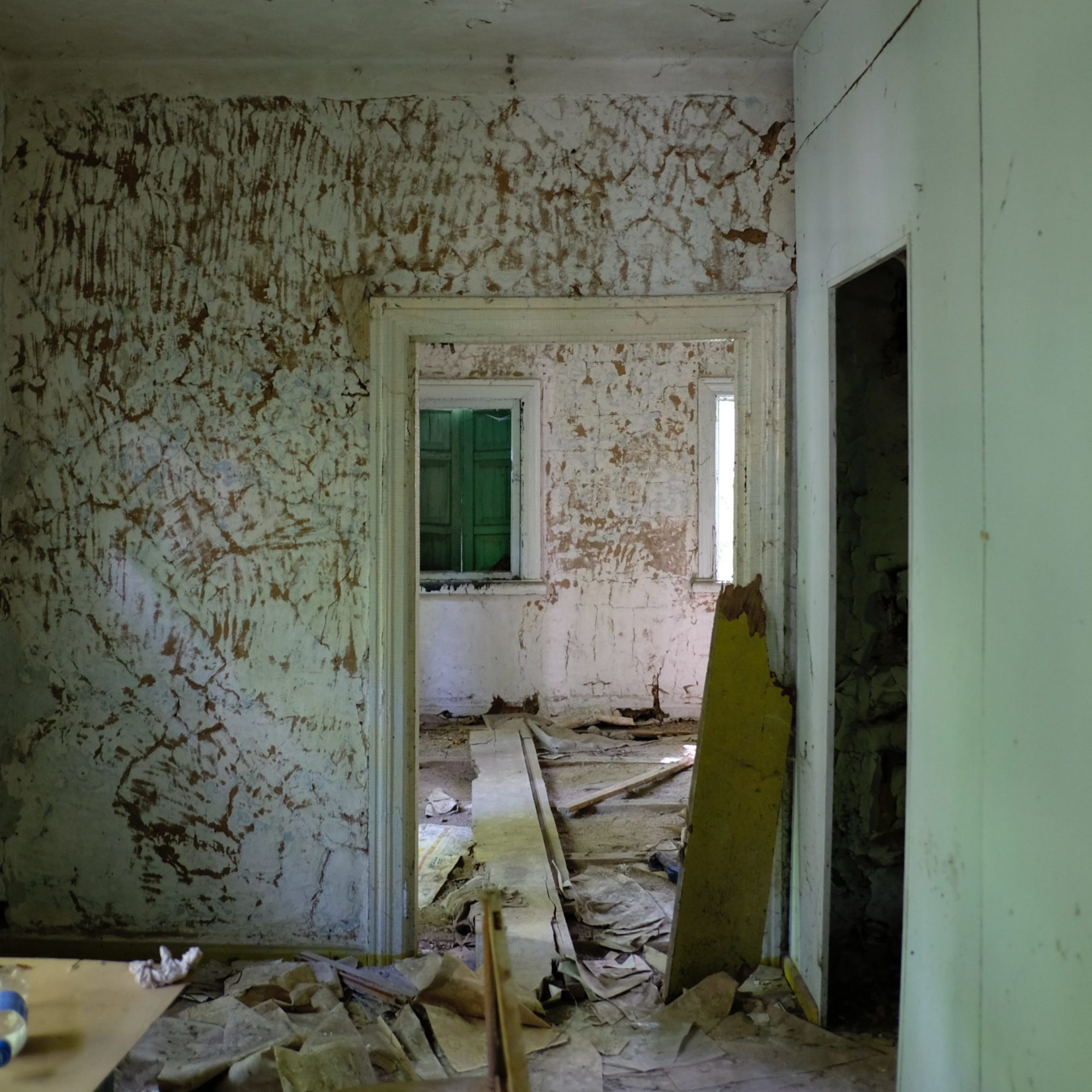Recently, Madame Marie Skłodowska Curie has been in the spotlight. From the International Atomic Energy Agency announcing an incredible fellowship opportunity in Madame Curie’s honor, to Amazon Videos releasing a film discussing her incredible accomplishments. I will be discussing the latter (kind of).
The movie, titled “Radioactive,” is okay. As a nuclear aficionado, I enjoyed the film. But, others? Not so much. One IMBD review labels the film as “an underwhelming biopic of an incredible story.” I am not a film connoisseur, and I won’t pretend to be one here. This piece isn’t meant to be a critique or a review, but rather an observation. Throughout the film, I couldn’t help but notice: there is a lot of green.
In the beginning, there’s some foreshadowing of this reoccurring theme: a single lit green lamp in an aging Madame Curie’s laboratory. The film then flashes back to Marie at a younger age, where she has just begun exploring radioactivity. The next time we really get a “green scene” is when Marie is falling for Pierre Curie, lazing about by a green lake under bright green branches. As the film picks up, so too does this motif. The wallpaper in the Curie’s household? Green. The tint of the laboratory windows as they get closer to discovering radium? Green. The radium itself? Bright, glowing, green.
Throughout the film, as radium continues its development and respective applications, the color green follows. For example, the radioactive chocolate, cigarettes, and beauty powder, “radioactive quackery” products, that initially come in the wake of radium’s discovery all have accents of green. The film also provides snapshots of radium’s future potential. These previews first start happy: a cancer patient circa 1950s receiving treatment in an American hospital (with, you guessed it, green walls). The next preview is decidedly less hopeful, wherein viewers find themselves in the green cockpit of Enola Gay, as American pilots drop the first nuclear weapon, Little Boy, on Hiroshima. Then comes a preview of people watching a nuclear explosion in Nevada, onlookers adorned in green while the mock house that’s eviscerated dons a green interior. At some point, we jump to Chernobyl, melting down and oozing green. As the film comes to an end, we find Curie on the battlefield, outfitting green ambulances with x-ray machines powered by her discovery. She travels through the war-torn terrain, the death and destruction of World War I reflected in her green eyes, a stark juxtaposition to her life-saving achievements.
As Mr. Curie states in the film, “you can’t see radioactivity…” Why, then, is there so. much. green?
Spoiler alert: the element radium itself isn’t green. In fact, Wikipedia, knower-of-all, lists its appearance as “silvery white metallic… that form(s) a black surface layer when exposed to air.”
Radiation visible to the human eye, Cherenkov radiation, is actually blue. And spoiler alert: the element radium itself isn’t green. In fact, Wikipedia, knower-of-all, lists its appearance as “silvery white metallic… that form(s) a black surface layer when exposed to air.” So, what the hell? What is with all the green symbolism?
As this article points out, radiation and green just tend to go together in popular culture, like peanut butter and jelly. The movie sparked my curiosity, and after doing some digging, I realized that there’s actually a super interesting history of the aesthetic association between the color green and radium.
First, it’s important to note that not only radium is radioactive. Before Curie, Henri Becquerel discovered evidence of radioactivity in uranium, though Curie herself created the term “radioactivity.” Very very basically, radioactive decay, or radiation, is the process of atoms emitting energy. (For more on radiation, see Illuminating Radioactivity.) But the key takeaway here is that elements other than radium can be radioactive. What exactly is radium, then? It’s an element that, in nature, is found in uranium and thorium ores. By itself, radium can be used for nuclear medicine applications, like we see in the movie with the x-rays.
Now, let’s talk about that green glow, as there are indeed historical objects that both contained radium and glowed an eerie green. Curie discovered radium in 1898 and isolated it in 1902. By around 1908, radium entered the everyday household. Not as an x-ray machine or a nuclear weapon, but as paint… very “pretty” paint. Specifically, self-luminous paint.
I think one thing we can all agree on is: stuff that glows in the dark is cool. And sometimes, very gorgeous (think neon colors under a blacklight). Folks from the early 1900s would probably also agree with this statement, hence the creation of “self-luminous” paint. The cool feature of “self-luminous,” comes from luminescence, or the “spontaneous emission of light.” Getting even more specific, the paint made in the early 1900s was radioluminescent. In radioluminescence the emission of light comes from a “bombardment of ionizing radiation,” which can be created by radium, promethium, and tritium.
So, in the paint mixture, a radioisotope (*cough* radium *cough*) is combined with a radioluminescent chemical, causing the paint to glow in the dark. In this case, it glowed green. However, it wasn’t the radium that was glowing green, it was the radioluminescent chemical. The chemical, phosphor, which is made from silver and zinc sulfide, provides the green glow, while radium simply emits particles that excite the phosphorescent.
Glowing in the dark, or “undark” as they called it in 1921, is not only aesthetically appealing, it’s also practical. After its creation, this paint was then slapped all over items, like watches and compasses, so they could be seen in the dark. The main producer of this green-glowing radium-infused paint was the US Radium Corporation, which operated across several factories in the US from 1917 to 1936. This corporation hired mainly women painters, who would also sometimes paint their fingernails and faces with the glowing paint (talk about Glossier gone wrong). Because radium is toxic (a lesson we learn in the movie… RIP Madame Curie), many of the employees got sick and several died from radiation poisoning. This factory and its “Radium Girls” resulted in a monumental litigation case that helped to enact labor safety standards. It also helped scientists study radium-induced poisoning in humans as early as 1933. Using this study, the National Bureau of Standards established a radium tolerance level in 1941, and Argonne National Laboratory established the Center for Human Radiobiology in 1968. Radium departed American households in the 60s, but not before forever associating itself with that ghastly green paint.
While the movie “Radioactive,” may have been boring, the discovery of radium and its respective applications was anything but. Radium, radiation and Madame Curie herself are all fascinating subjects with deep, complex, colorful stories that, sometimes, merit investigation outside the confines of a movie screen.














